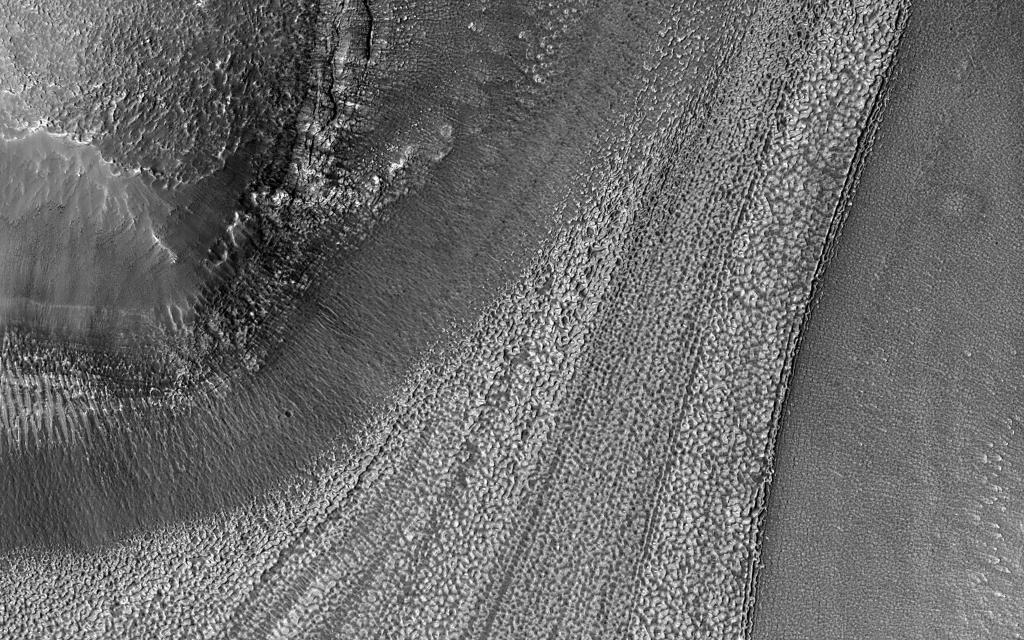Understanding the Movement of Martian Ice and its Geological Implications
The Mars Reconnaissance Orbiter (MRO) has recently captured stunning images revealing ridged lines etched across Mars’ terrain, indicative of the slow movement of ice. Unlike the predominantly polar ice caps, these distinct patterns have emerged across various non-polar regions of the Red Planet.
As ice gradually descends downhill, it carries fragments of rock and soil along its surface and within the icy subsurface, a process that unfolds over millennia. The result is a mesmerizing network of linear imprints that serve as a historical testament to the movement of ice over time.
Since 2006, the MRO has been a stalwart in the exploration of Mars, employing cutting-edge instruments to photograph the Martian surface at unparalleled levels of detail. These instruments meticulously analyze minerals, hunt for traces of subsurface water, monitor the distribution of dust and water in the atmosphere, and track the planet’s daily global weather patterns.
This extensive research is uncovering mineral deposits that likely formed in water over extended periods, seeking remnants of ancient shorelines and lakes, and scrutinizing layered deposits generated by the movement of water across time.
In simple terms, this discovery sheds light on the dynamic geological processes at play on Mars. The revelation of ice flow patterns not only deepens our understanding of the planet’s history but also raises intriguing questions about the potential presence and movement of water in Mars’ past.
The Mars Reconnaissance Orbiter continues to be an invaluable asset in unraveling the mysteries of the Red Planet, offering invaluable insights into its past and shaping our comprehension of its present landscape.
Original Article: Ice Flows on Mars – NASA
Image Credit: NASA/JPL-Caltech/University of Arizona










Leave A Comment